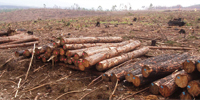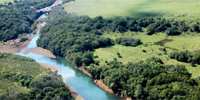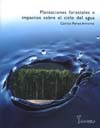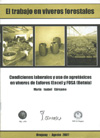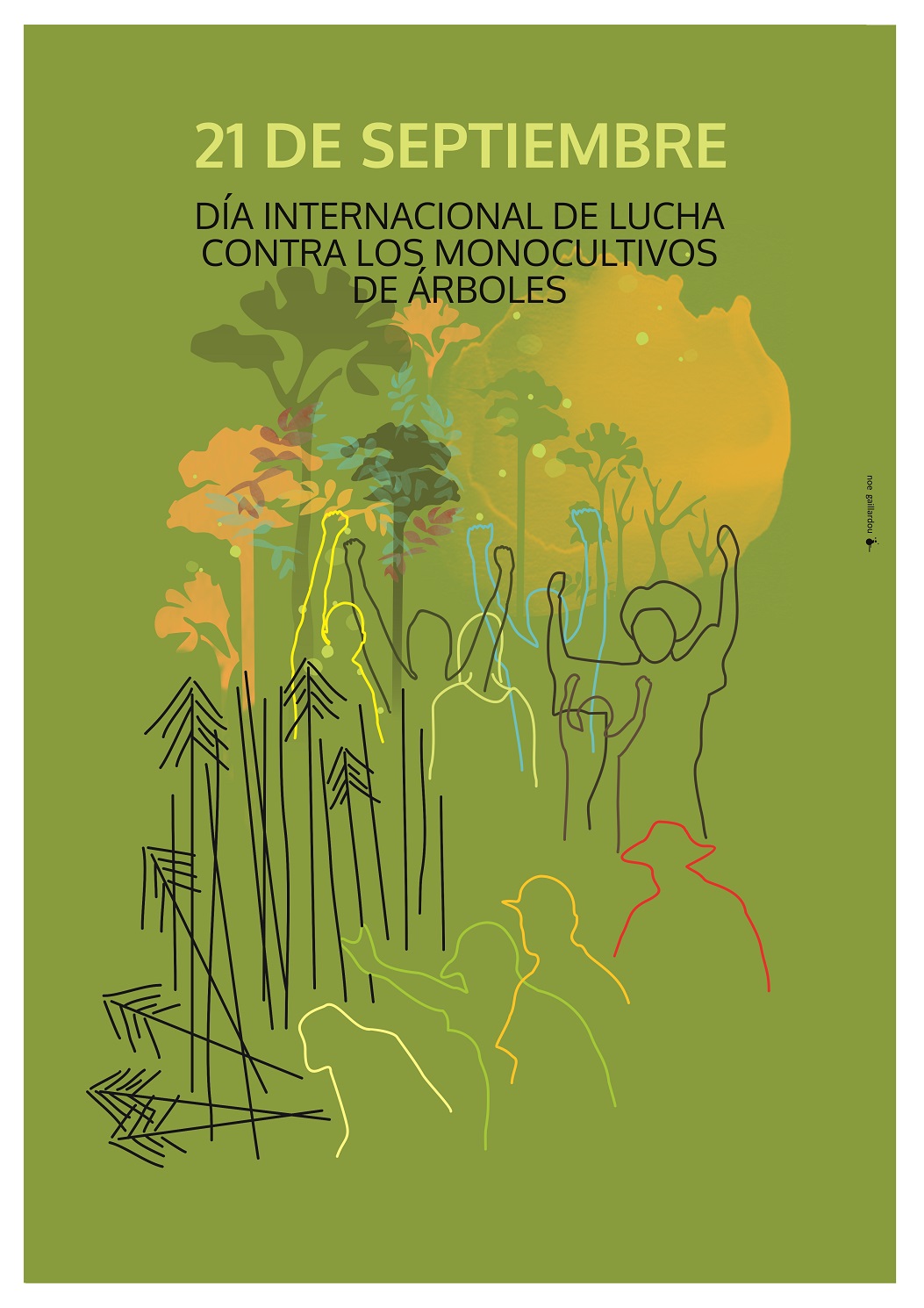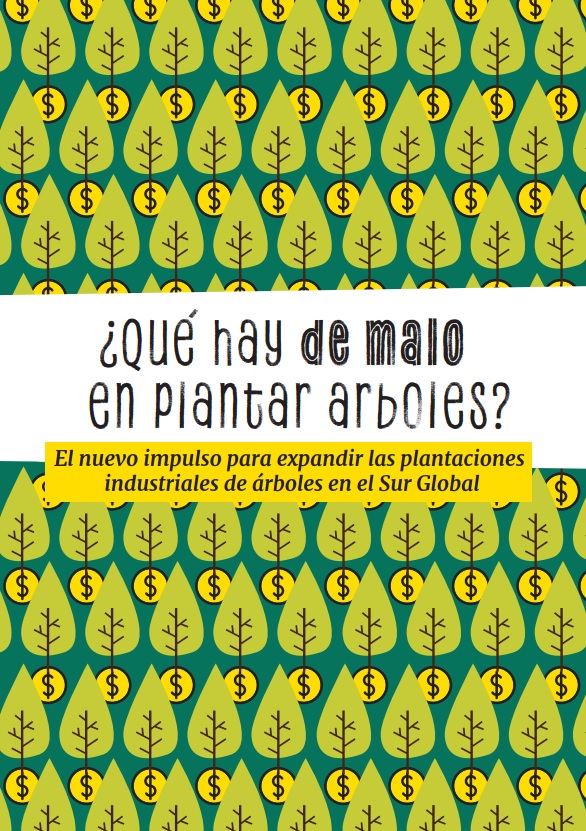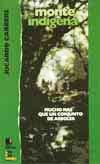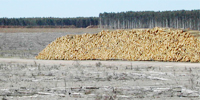The forestry plan launched in 1988 by the government –based on the promotion of large-scale tree monocultures– promised the generation of jobs and the entry of foreign currency from increased exports. To achieve these objectives, the Uruguayan State made considerable investments, including direct subsidies, tax breaks, soft loans and investments in infrastructure. By the year 2000, the State had allocated 69.4 million dollars to the sector under the form of direct subsidies. The total tax breaks (on the planted area and on imported goods) amounted to 55.8 million dollars, while soft loans were estimated at 55 million dollars. Finally, investments in infrastructure totalled 234.1 million dollars. In short, Uruguayan society, as a whole has contributed 414.3 million dollars to forestry development.
The question is then: what benefits has Uruguayan society reaped?
Regarding employment, the result is a total failure. Of all agricultural and livestock activities, large-scale cattle and sheep farming were always considered in Uruguay to be the worst option as to the number of jobs generated per hectare. This is no longer the case: afforestation has shown itself to be even more negative.
According to figures from the year 2000 agricultural and livestock census, the number of permanent workers per thousand hectares of tree plantations is 4.49. Cattle-raising for meat generates 5.84 permanent jobs over the same area of land, while sheep-raising provides 9.18 jobs. And these, together with rice-growing (7.75) are the worst figures. At the other end of the range we find production for self-consumption (262 jobs per thousand hectares), poultry farming (211), vine-growing (165), horticulture (133), pig-raising (128), while in the middle of the range we find dairy cow production (22), machinery services (20) and cereal and industrial crops (10).
Faced by these figures, the forestry sector usually argues that it generates many seasonal jobs, both at the time of plantation and harvesting. However, even considering these workers, the comparative figures with cattle and sheep-raising are practically identical, as these also generate seasonal workstations. To this should be added the deplorable labour conditions of these seasonal workers.
Summing up, over a total area of 660,000 hectares, tree plantations have generated 2,962 permanent jobs. Nothing could be worse. But even so, if one considers that tree plantations have displaced other agricultural and stock-raising activities, the conclusion is that this activity has signified a net loss of permanent jobs in the agricultural sector. In fact, assuming that the area under afforestation had continued to be occupied by cattle or sheep raising, in the first case, jobs would have amounted to 3,854, while in the second place, they would have amounted to 6.058. It is therefore clear that the remedy has been worse than the disease and that afforestation has contributed to evict workers from the rural environment.
Regarding exports, the situation is not much better. In fact, 80% of the exports linked to the tree plantation sector consist of logs (unprocessed roundwood), while the remaining 20% are made up of sawn lumber. That is to say, 80% of what is exported does not generate any industrial workstation, while the other 20% consists of a minimum transformation of raw material that does not generate any considerable number of jobs either.
In turn, income from these exports does not imply any considerable amount of foreign currency if compared with the area of land occupied by the sector. In fact, annual values of forestry sector exports amount to between 35 and 45 million dollars, figures that come lowest in the export basket (which averages an annual total of 2,000-2,500 million dollars). If compared with rice –a sector which does not generate many jobs per hectare either– it will be seen that, with an average area sown of some 150,000 hectares –that is, four times less than that occupied by the forestry sector– some 200 million dollars are generated from exports, that is to say, five times more than that obtained by the forestry sector.
In sum, afforestation promised much but has not fulfilled its promises. Of course there have been beneficiaries, in the first place the major firms, particularly transnational corporations. Gigantic companies such as the US-based Weyerhaeuser (Colonvade) the Anglo-Dutch and Finnish company Shell/Kymmene (La Forestal Oriental) and the Spanish company, ENCE (Eufores) together with a considerable number of Chilean and Canadian companies, as well as other nationalities, have benefited from the conjunction of cheap land, cheap labour, rapid growth of the trees, subsidies, tax breaks, soft loans, investment in infrastructure and research. For them, together with a handful of large national companies, afforestation has been and continues to be good business. Anyone can make money this way. With all the benefits granted to the forestry sector, any agricultural activity would have been good business.
In the present situation of severe crisis, this situation is an absurd injustice. Absurd because these enormous companies do not need to be subsidised by an impoverished country such as Uruguay, and unjust because the scant resources of society are granted to subsidising an activity that does not generate jobs nor wealth, while they are denied to other activities, which are much more positive for the country and its people.
It is amazing that, under these conditions, the local governments of inland departments, and particularly the most planted departments (Rivera, Tacuarembó, Paysandú, Rio Negro, Lavalleja) have not informed public opinion nor the government that precisely one of the main causes of their deficit resides in afforestation. In fact, this activity does not pay rates on real estate, one of the departmental governments’ major sources of income. Thus, the larger the area under tree plantations, the smaller the income received by the departmental governments.
It is also amazing that the directives regarding “cuts” in expenditures and jobs, “adjustments” to the fiscal budgets, “decreases,” in state-run services coming from the IMF, the World Bank, the Inter American Development Bank, President Jorge Batlle and the Ministers of Finance, have never mentioned –and still less touch– the huge resources that the State has allocated and continues to allocate to this activity. The silence of parliament –including the country’s four political sectors– in this context of total crisis, makes it the accomplice to this absurd injustice of handing out resources to those who do not need them and denying them to those who are in the most complete despair. How long will this go on?
Source: WRM’s bulletin Nº 68, March 2003


